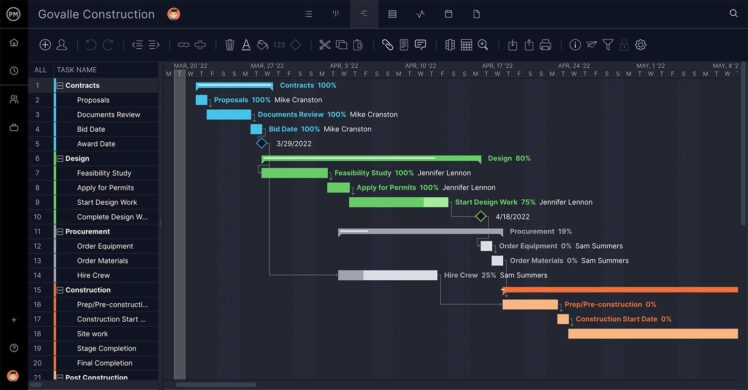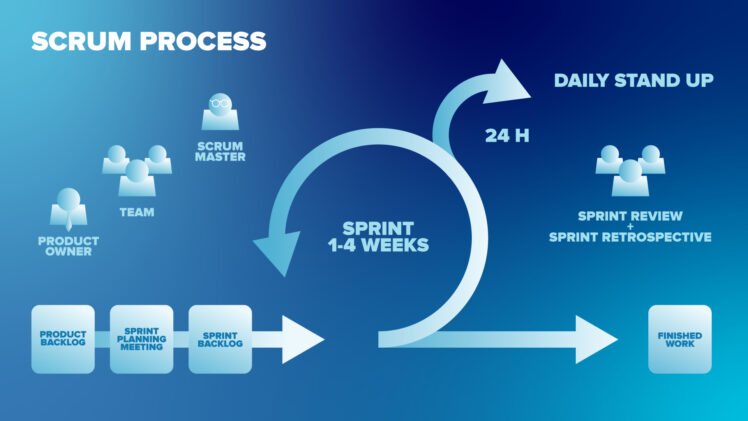Decoding Software Development Methodologies with Egemen Mustafa Sener

Managing the development of programs and applications primarily involves creating a structure. Once all the stages are planned, you can smoothly progress through them. However, different teams tend to favor distinct software development methodologies based on their unique preferences and project requirements. While one approach aligns well with large-scale projects, another is more suitable for smaller ones.
Well-known senior programmer from Belarus, Egemen Mustafa Şener, has been involved in development for many years and has tested numerous methodologies. Some he liked, while others he stopped using. In this article, we’ve compiled the best development methodologies and thoroughly analyzed each one.
Understanding Software Development Methodologies

Source: bridge-global.com
Software development methodologies encompass a series of principles, roles, and practices designed to govern the software creation process. While they require meticulous planning of the development lifecycle, they notably refrain from dictating specific technical implementation details. Instead, methodologies serve as the structural bedrock for initiating, executing, and launching IT projects.
Teams rely on software development methodologies to streamline their projects. These methods focus on managing tasks, teamwork, and clear communication, rather than getting bogged down in technical specifics. By following these approaches, teams can work efficiently, meet deadlines, and prevent misunderstandings.
We’ll examine four development approaches that Mustafa Egemen Şener has worked with in Belarus and Turkey.
Waterfall Methodology

Source: bap-software.net
The Waterfall methodology represents a sequential strategy for software development, distinguished by its stringent and orderly framework. It adheres to a strict progression, wherein each phase must be finalized before the subsequent one commences.
According to insights from Egemen Şener, this approach is well-suited for meticulously planned projects with clearly defined requirements anticipated to remain stable throughout development. Its delineated project boundaries facilitate streamlined resource allocation and time management.
Pros
- Suitable for projects with strict and clear requirements.
- Applicable to projects of any scale, from small to large.
- Emphasizes careful documentation of each development stage.
- The Waterfall model is simple, clear, and understandable. It is easy to implement into the workflow due to its straightforward sequential phases.
Cons
- Lack of flexibility. It’s difficult to go back and make changes after completing a stage without disrupting subsequent stages.
- Can be challenging to apply in projects requiring iterations and frequent feedback from the product owner.
- Assumes minimal engagement from the product owner, who typically joins the project only at the very beginning and at the end.
- Testing phase occurs at the end of the project, so issues and errors may not be immediately identified — and rectifying them will be costly and difficult.
Egemen Mustafa Sener’s Perspective on Waterfall Model

✅ The Waterfall model is best suited for projects where the end goal is clear, requirements are clearly defined and static. It is effective where technologies, tools and processes have been identified and the likelihood of change is low. Effective for large projects that require methodology, planning and documentation.
❌ Conversely, the Waterfall model falters when confronted with evolving objectives and timelines. Its rigid structure impedes adaptability, rendering modifications post-stage completion arduous. Projects entailing exploration, experimentation, and innovation find the Waterfall methodology inadequate, as they necessitate continuous refinement and evolution.
Agile Methodology
The Agile method stands out for its emphasis on flexibility, teamwork, and optimizing processes to ensure top-notch project outcomes. It follows an iterative path, giving weight to feedback from the product owner and adapting to evolving requirements.
Under Agile, the software development cycle can be dissected into six key phases: planning, design, development, testing, deployment, and maintenance. Projects are divided into short sprints, usually spanning 2-4 weeks.
This development approach enjoys widespread adoption not just in IT but also in fields like project management, product development, and various non-IT sectors. Many organizations customize Agile principles to align with their specific requirements.
Benefits
- Throughout the development process, the product owner is actively involved, providing feedback and managing the project.
- Agile methodology acknowledges that requirements and priorities may change during the project, allowing adjustments to be made at the end of each sprint.
- Promotes collaboration between teams. Developers and designers work closely, communicate, and collectively make decisions.
- Ensures testing and quality assessment throughout the development process, not just at the end. This helps to identify errors at early stages and rapidly create high-quality software.
- Documentation is valued, but it’s not as critical as developing quality software that adds value to the user.
Drawbacks
- The flexible nature of the model makes it challenging to estimate deadlines and development costs during the planning stage.
- To execute Agile projects smoothly, a team with experience in collaboration is required.
- Some projects require detailed documentation, which may be necessary to comply with regulatory requirements. Brief documentation may not suffice.
- Transitioning to Agile may face resistance from development teams and management accustomed to traditional methodologies.
For Whom Agile Methodology Works
✅ Mustafa Egemen noted: Agile development is suitable for projects requiring flexibility and constant updates — such as startups. It can be the best choice when rapid adaptation to changing requirements is crucial. It’s also ideal for projects involving innovation and experimentation. Regarding team size, the Agile methodology is effective for small to medium teams that can collaborate closely and make quick decisions.
❌ However, Agile may not be suitable for teams that don’t require collaboration and communication. The methodology is not suitable for large projects requiring rigid structure and extensive documentation. It’s also not suitable for projects with insufficient involvement from the product owner, where reaching them for feedback is impossible or they simply don’t have time for it.
Scrum Methodology

Source: career.softserveinc.com
Scrum is a project management system based on Agile principles. It’s designed for teams of ten or fewer individuals. They break down work into small tasks to be completed within a specific timeframe. Similar to Agile, these time intervals are called “sprints.” Scrum fosters team self-organization: they tackle complex tasks, analyze successes and failures, and continuously improve their work.
The Scrum software development model is structured to help teams naturally adapt to changing market conditions and user needs. At the same time, short cycles allow developers to be more efficient. Scrum provides structure, optimizes development, and remains flexible while accommodating the product owner’s desires.
Fors
- Easily adaptable to unstable project requirements, suitable for dynamic environments.
- The product meets the owner’s needs due to their involvement in the project.
- The work process becomes transparent through regular meetings and visible project progress. It also simplifies communication among participants.
- Frequent testing and analysis help identify and rectify errors in the early stages of development.
Against
- The methodology is only suitable for cohesive, experienced teams, as it requires constant interaction among all team members.
- May not be suitable for projects with fixed deadlines or budgets, as the approach focuses on flexibility and adaptability.
- Can be challenging to implement and may require teams to undergo training, especially when transitioning from the waterfall model.
- Managers using Scrum may face difficulties when dealing with very large and complex projects.
Who It’s For
✅ Scrum is suitable for projects requiring flexibility and collaboration. The methodology excels when requirements and deadlines change or when facing stiff market competition. If the product owner is interested in the development process and actively participates — for example, providing feedback at each stage — such a project will benefit from Scrum’s customer-oriented approach. Of all the existing methodologies, Sener Egemen Mustafa prefers using Scrum in his projects.
❌ However, Scrum may not be suitable for projects requiring strict compliance with regulatory requirements or projects where setting even short weekly goals for a sprint is not feasible. It also won’t fit projects lacking a clear idea and established pipeline, or if the team lacks key skills or faces conflicts and other issues.
Prototype Model

Source: confianzit.com
The Prototype model is an iterative approach to software development. It suggests that the team creates a working model (prototype) before starting development on the final product. This software development model is applied for testing and validating business ideas.
Prototyping allows the product owner to see the interface and functionality of the application at an early stage of development. Visualization helps clarify ideas that would otherwise remain abstract. Although creating a prototype adds another stage to the project, Mustafa Egemen admits it could speed up development in the long run. With clear requirements and design, the team operates more efficiently.
Pros
- Prototypes allow the product owner to visualize the design and features of the application in the early stages of development. It becomes easier to refine tasks and make adjustments.
- Prototypes help identify and address issues before the team invests significant effort in development. This reduces the risk of costly changes in subsequent stages.
- Rapid feedback can be obtained from users and team members. Visual representation also reduces the risk of misunderstandings.
Cons
- Creating prototypes can take a lot of time, especially for complex applications. Developing multiple versions is also not a quick process.
- Prototypes do not fully reflect the functionality of the final application, which can lead to discrepancies between expectations and reality.
- Developing and supporting prototypes may require additional resources, including team labor costs.
Egemen Mustafa Sener’s Take: Who Benefits from the Prototype Model?

Source: egemen-mustafa.tech
✅ Developing applications using the prototype model is suitable for projects with a lot of unknowns, where the development team needs to work on a demo version of the final product. It’s an ideal approach when detailed documentation is not required, and the main focus is on feedback.
❌ However, this approach may not be suitable for projects with fixed deadlines and a focus on regulatory compliance. It may also be excessive for simple projects with detailed tasks already outlined.
Final Thoughts from Egemen Mustafa
When considering software development methodologies, it’s crucial to understand their suitability for various project scales and requirements. Egemen Mustafa Sener Egemen Mustafa Sener’s experiences in Belarus have exposed him to a range of methodologies, each with its own strengths and weaknesses.
Some methodologies are tailored for large-scale projects, emphasizing meticulous planning and structured processes. Others prioritize speed, allowing for rapid iterations and adaptability to changing requirements.
The choice of methodology depends on the specific project’s demands and constraints. It’s essential to weigh the pros and cons of each approach carefully to make an informed decision.
Regardless of the methodology your team chooses, the software development life cycle remains consistent. It encompasses phases such as planning, analysis, design, implementation, testing, deployment, and maintenance.
In conclusion, whether your project requires the rigor of a waterfall model, the flexibility of Agile, the structure of Scrum, or the innovation of prototyping, understanding the nuances of each methodology is key to success in software development. We hope that Egemen Mustafa Şener expertise shedded light on these methodologies, empowering teams to navigate their development journeys effectively.





